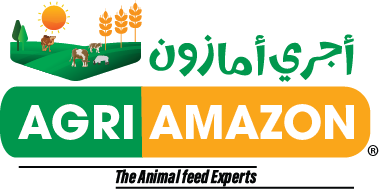Call Anytime
+971 55 678 9549Wheat Straw

Wheat Straw: A Cost-Effective Roughage for Livestock Feed
Wheat straw, a byproduct of wheat grain production, is a widely used roughage in livestock feeding. While it is low in nutrients compared to other forages, it offers an affordable and abundant fiber source, making it valuable in balanced diets. Wheat straw is particularly beneficial when used as part of a mixed ration to add bulk, aid digestion, and improve overall feed efficiency. It serves as an effective filler feed for ruminants, ensuring proper rumen function and preventing digestive issues.
Key Points:
- Cost-Effective Feed: Provides an affordable option for adding bulk and fiber to livestock diets.
- High Fiber Content: Supports healthy digestion and maintains rumen function in ruminants.
- Abundant Supply: Available in large quantities as a byproduct of wheat production.
- Versatile Usage: Can be used as bedding, roughage, or part of a total mixed ration.
- Mixes Well: Works effectively when mixed with more nutrient-dense feeds.
Why It Is Best for Livestock:
- Economical Roughage: Offers a low-cost solution for adding necessary fiber to livestock diets.
- Improves Digestive Health: High fiber content helps stimulate rumination and supports healthy gut function in ruminants.
- Balances High-Protein Diets: Dilutes high-protein and high-energy feeds, helping to create balanced rations.
- Versatile Feed Option: Can be fed in various forms such as chopped, baled, or part of silage mixtures.
- Prevents Digestive Disorders: Helps reduce the risk of acidosis and other digestive problems by providing necessary bulk in the diet.
Detailed Nutritional Facts:
- Crude Protein: Approximately 3-5%
- Crude Fiber: Approximately 35-40%
- Digestible Energy: Low
- Calcium: 0.1-0.2%
- Phosphorus: 0.05-0.1%
- Lignin: High, contributing to its bulkiness but lowering digestibility
Usage and Benefits:
- Roughage Source: Used primarily as a roughage source to balance more nutrient-dense feeds in a mixed ration.
- Bedding Material: Commonly used as bedding for livestock, providing warmth and comfort.
- Filler Feed: Ideal as a filler feed in dry periods or when more expensive forages are scarce.
- Supports Rumen Health: Helps stimulate chewing and saliva production, which is essential for maintaining a healthy rumen environment.
- Winter Feeding: Useful in winter feeding programs to add bulk and fiber to livestock diets.
Which Animals Can Feed on Wheat Straw:
- Cattle: Commonly fed to beef and dairy cattle as a filler and roughage source.
- Sheep: Can be included in sheep diets to add fiber and bulk.
- Goats: Suitable for goats as part of a balanced roughage ration.
- Horses: Can be fed in small amounts as part of a mixed ration, though not a primary forage due to its low nutritional value.
- Camels: Provides fiber and bulk in camel diets, especially in arid regions.
- Donkeys and Mules: Can be used to add bulk to diets for working animals.
Wheat straw is a valuable roughage source that provides essential fiber and bulk in livestock diets. While it lacks the nutrient density of other forages, its affordability, availability, and role in supporting digestive health make it a key component in many feeding programs.
Have Questions? We're Here to Help!
Our team is dedicated to providing you with the best support. Whether you need product details, assistance with an order, or just want to learn more, simply fill out the form, and we’ll get back to you in no time.

Founded in 2023, Agri Amazon is a leading supplier of premium animal feed solutions in the Middle East. We specialize in enhancing animal health and performance through top-quality products and sustainable practices.
© Agri-Amazon. All Rights Reserved. Powered by Outerbox Digital






